
| Eastern Ringed Xenica (erroneously: Tisiphone achanthe) SATYRINAE, NYMPHALIDAE, PAPILIONOIDEA | (donherbisonevans@yahoo.com) and Stella Crossley |

(Photo: courtesy of
Laura Levens, Upper Beaconsfield, Victoria)

| Eastern Ringed Xenica (erroneously: Tisiphone achanthe) SATYRINAE, NYMPHALIDAE, PAPILIONOIDEA | (donherbisonevans@yahoo.com) and Stella Crossley |

(Photo: courtesy of
Laura Levens, Upper Beaconsfield, Victoria)
These Caterpillars are initially green, with a dark brown head. Later instars become brown with a green, brown, or pink head, and have dark dorsal and lateral lines. Both head and tail each have a pair of horns.
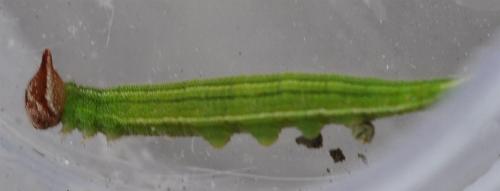
The caterpillars feed on the leaves of various Grasses ( POACEAE) including :
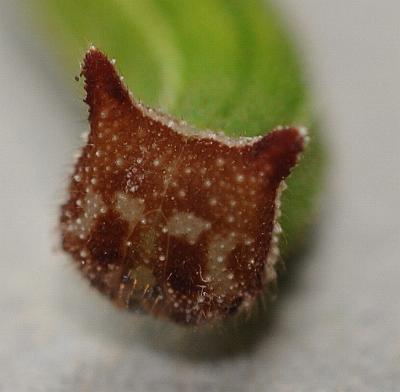
The caterpillars hide in the base of the tussock leaves during daylight, feeding nocturnally on the tips of the leaves. They grow to a length of about 3 centimetres.
The pupa is brown with dark markings, suspended from a cremaster, usually on a leaf or stem of the foodplant.
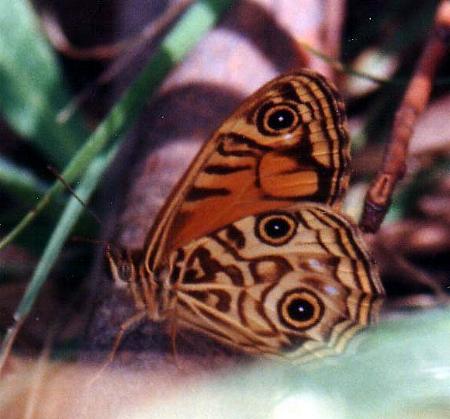
The adult butterflies have a wing span of about 4 cms. The upper surfaces of the wings are orange with dark brown markings, and an eyespot on each wing. The males have a grey-brown band across each forewing. The wingspan is about 4 cms.
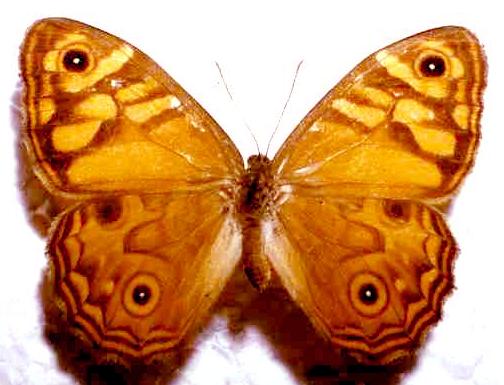
The undersides are yellow with brown markings, and one eyespot on each forewing, and two on each hindwing. The butterflies normally rest with wings closed. The butterflies fly close to the ground and settle frequently, so using their camouflaged underside to avoid detection.
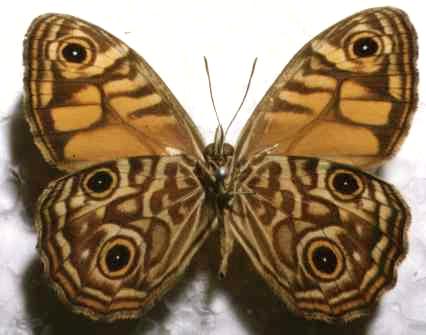
The eggs of this species are cream and spherical, with a diameter of about 0.8 mm. They are laid in groups of 1,2, or 3 on a foodplant leaf.
Two sub-species have been recognised :
Further reading :
Michael F. Braby,
Butterflies of Australia,
CSIRO Publishing, Melbourne 2000, vol. 2, pp. 502-503.
Edward Donovan,
General Illustration of Entomology,
An Epitome of the Natural History of the Insects of
New Holland, New Zealand, New Guinea, Otaheite and other
Islands in the Indian, Southern and Pacific Oceans,
London (1803), Part 1, pp. 105-106, and also
Plate on p. 104.
Wesley Jenkinson,
Life history notes on the Ringed Xenica,
Geitoneura acantha (Donovan, 1805)
Lepidoptera: Nymphalidae,
Butterflies and Other Invertebrates Club,
Metamorphosis Australia,
Issue 74 (September 2014), pp. 22-25.
 caterpillar |  butterflies |  Lepidoptera |  moths |  caterpillar |
(updated 28 October 2011, 13 August 2024)